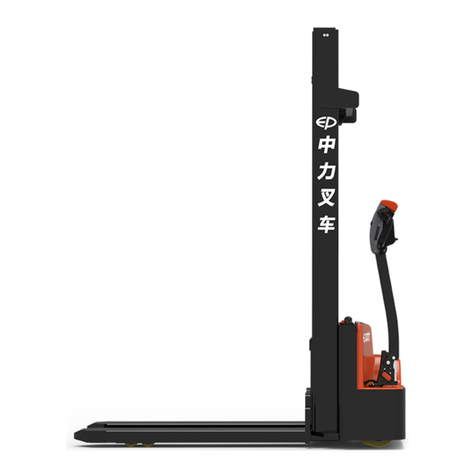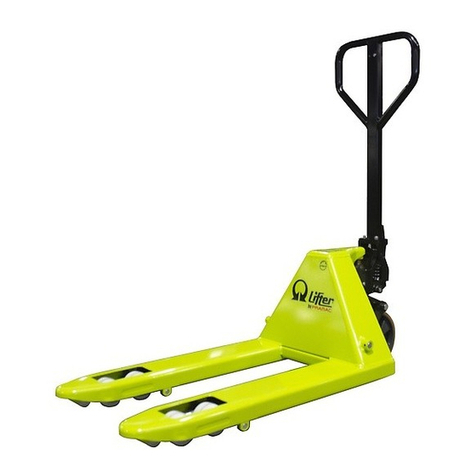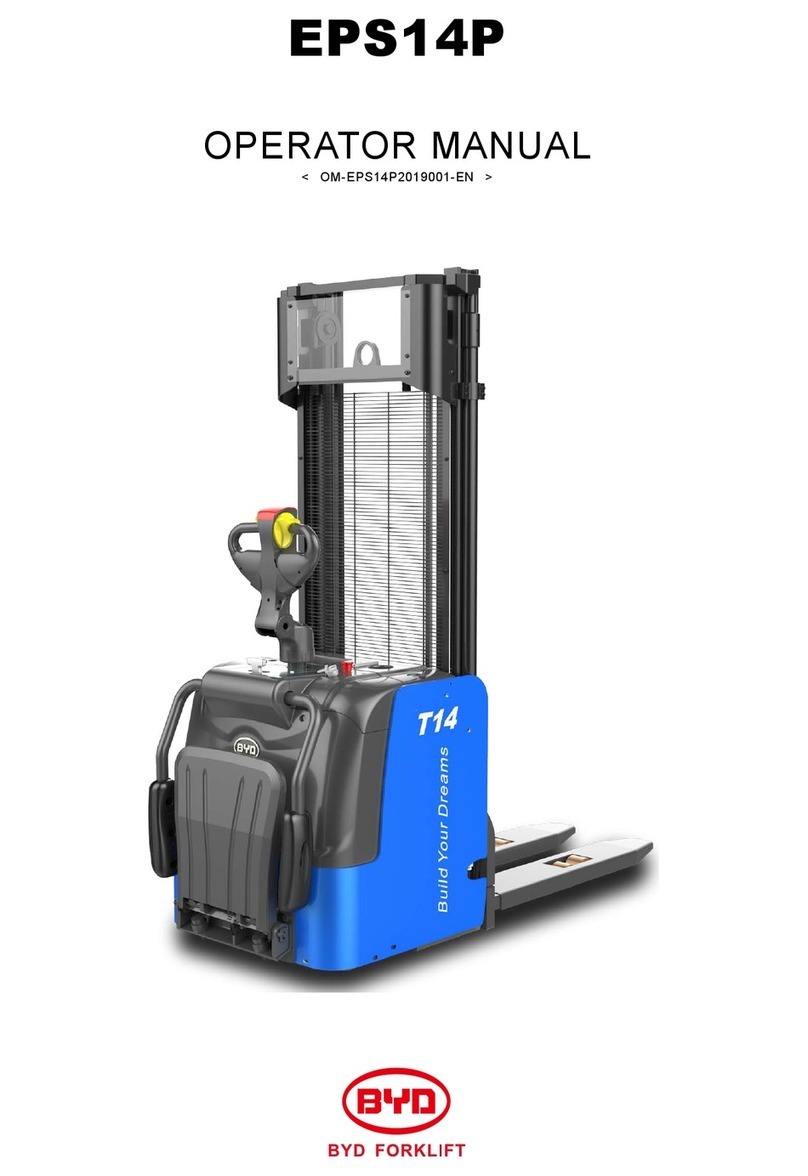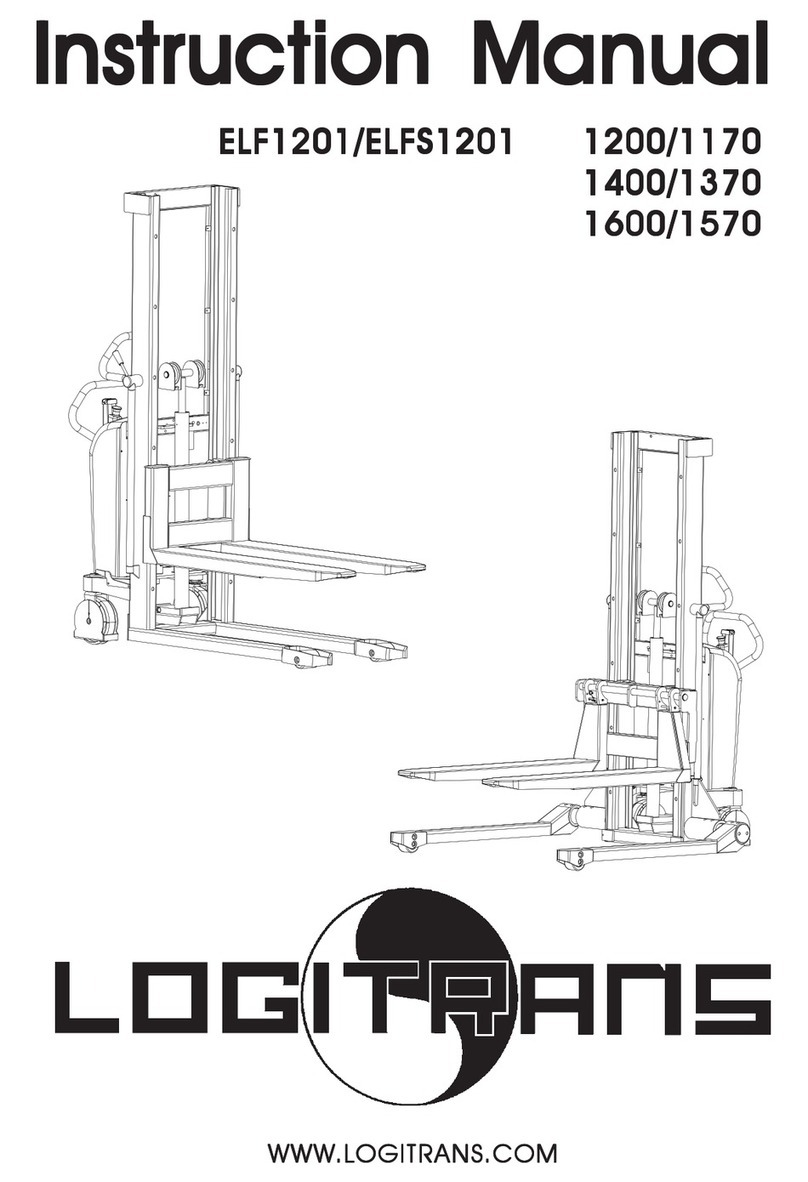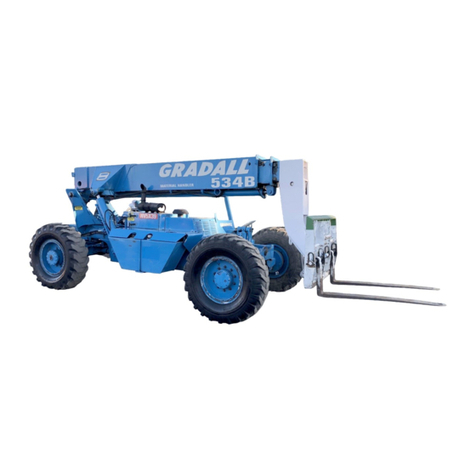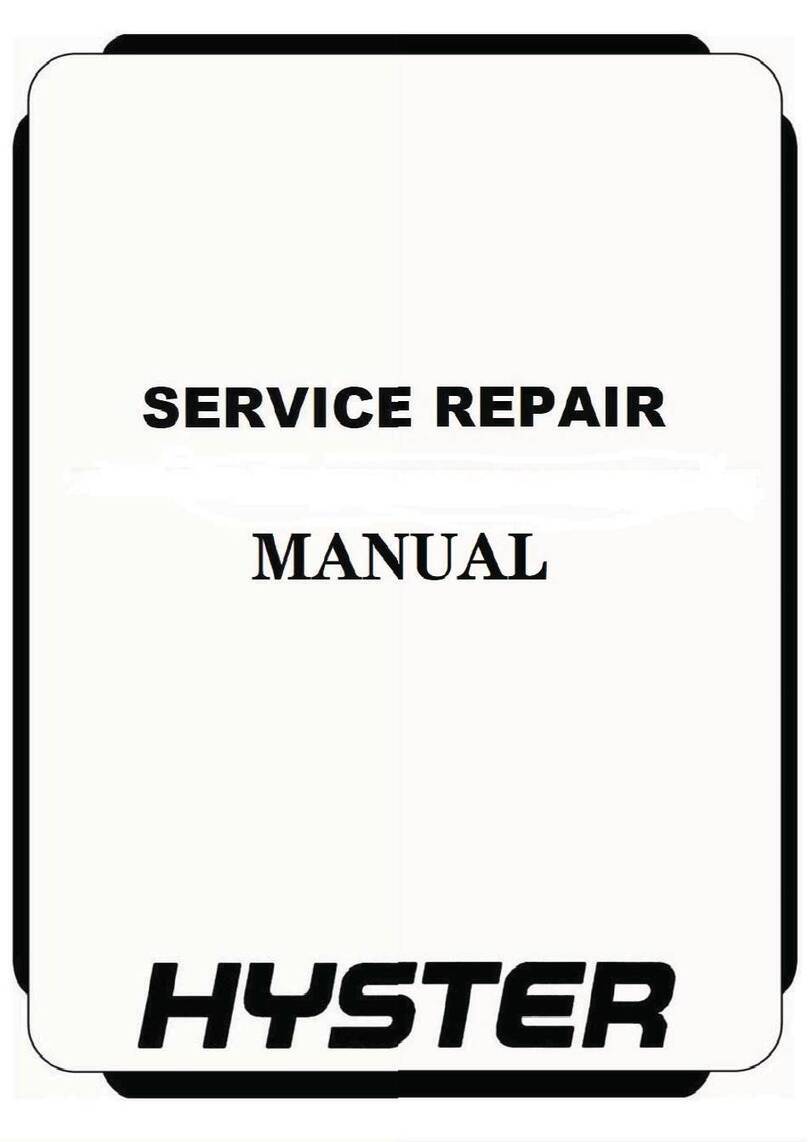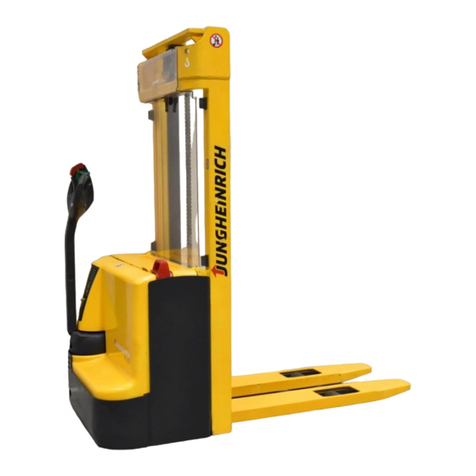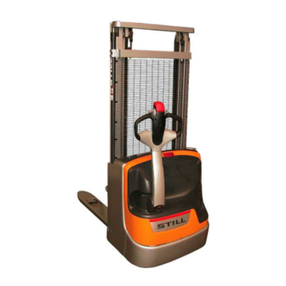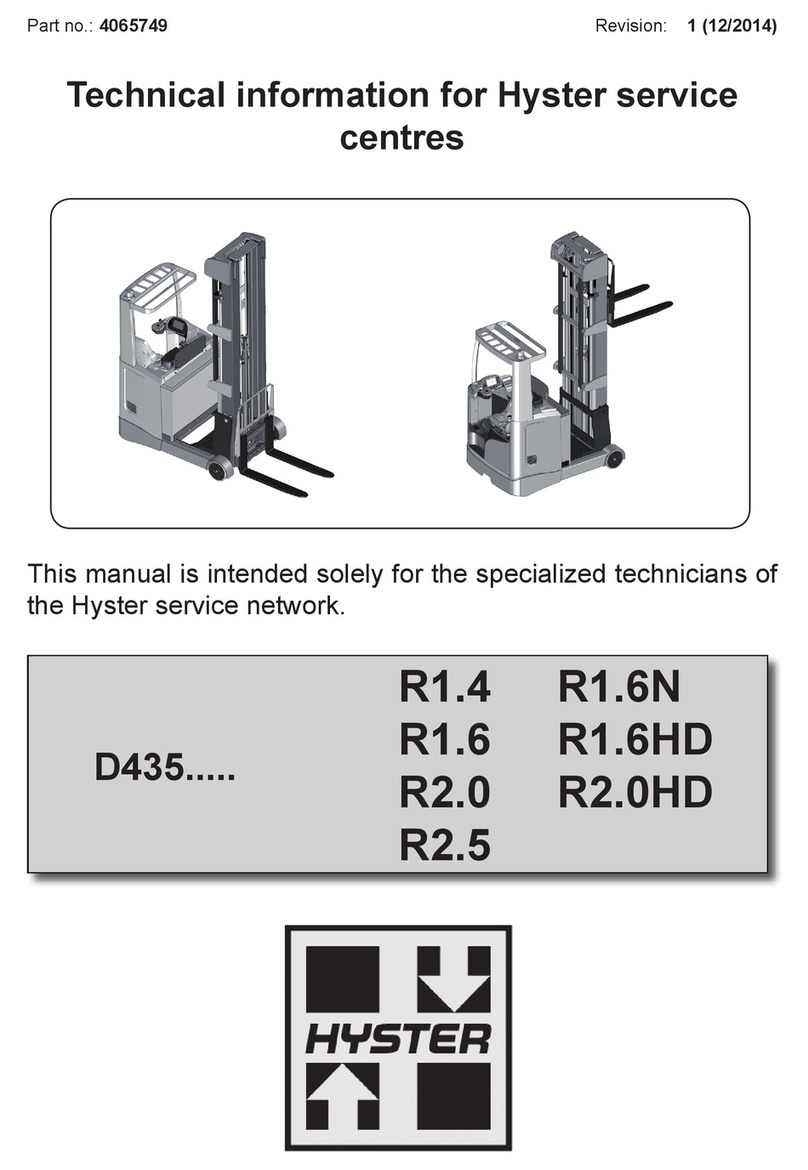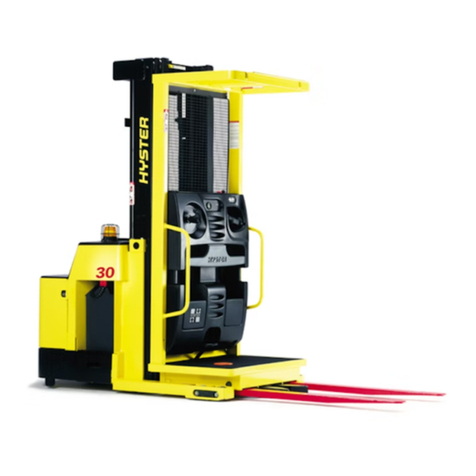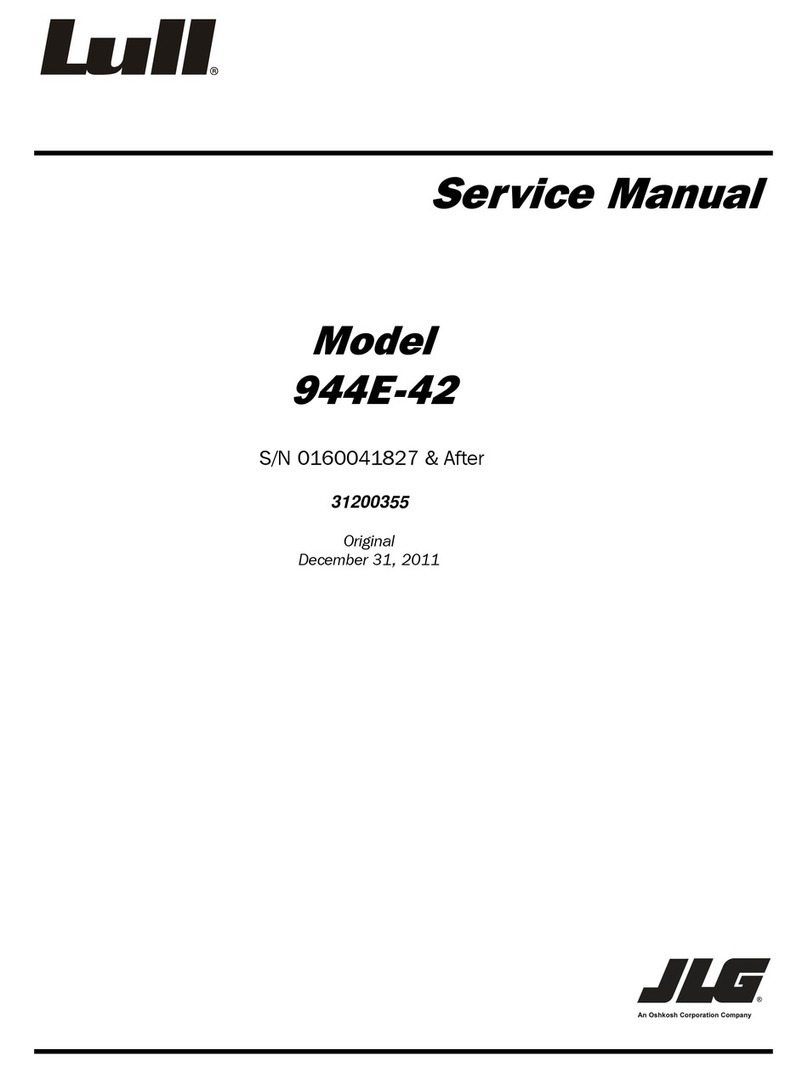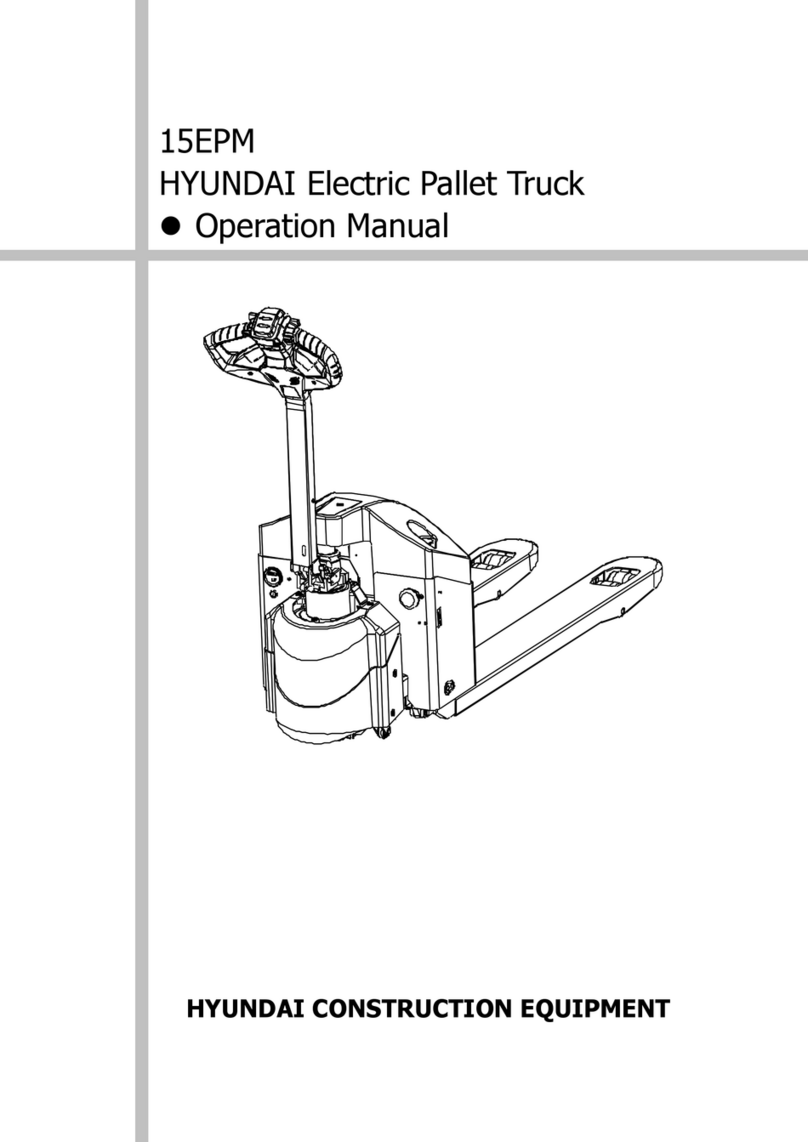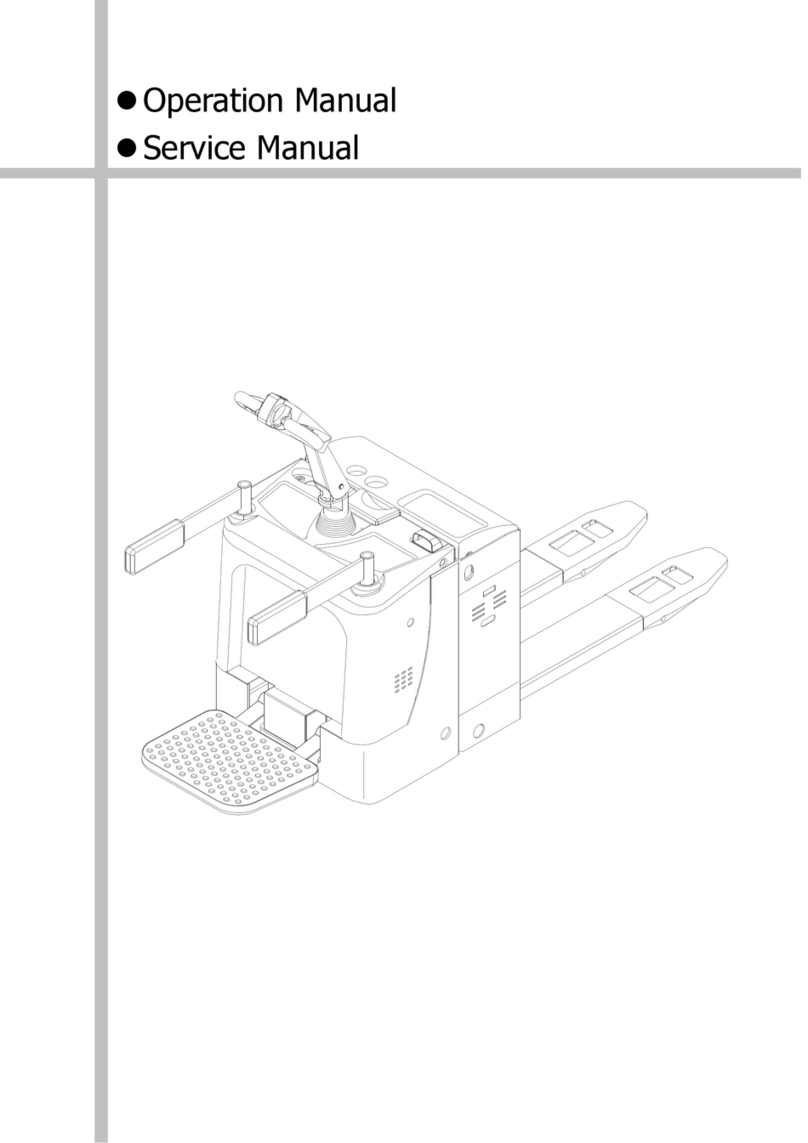EP Equipment EPL151 User manual

EPL151
Original Instruction Part No.508000003010
V2 12/2019
Operation Manual
WPL201
RPL201/RPL201H
HPL152

EP EQUIPMENT CO.,LTD. is one of the world’s
leading companies manufacture, design
material handling equipment and provide related
service. With over 100,000 square metres plant
it produces over 100,000 trucks per year, and
provides professional, eective and optimized
material handling solutions worldwide, until now
it has developed three major kinds of business:
Material handling equipment: Focus
on electric forklift and warehouse
equipment
OEM parts: Global parts supply
Imow industry,online: One-stop
industrial products supply
Guided by our customer-oriented concept, EP
has developed service centers in more than
30 countries around the world, from which
customers are able to receive timely local
service. Moreover, 95% of warranty parts can be
shipped out within 24 hours after been ordered.
Through our online after-sales service system,
customers can process their warranty claims,
order spare parts and consult the operation
manuals, maintenance materials and spare
parts catalogs.
With business all over the world, EP has
thousands of employees and hundreds
of agents worldwide to provide our global
customers with prompt local service.
Based on the concept of sharing economy ,
EP also oer rental service for various logistics
equipment. Adhering to the idea “Making the
leasing of logistic equipment more simple”,
EP is devoted to providing customized one-
stop leasing solutions for our customers with
our high quality, reasonable price and prompt
rental service.
EP’s mission&vision is “ Let more people apply
the electrical material handling equipment to
relieve the intensity of labour” and “Let’s grow
together”.
•
•
•
EP EQUIPMENT CO., LTD
Address: XIAQUAN, DIPU, ANJI,
ZHEJIANG, CHINA
Tel: + 86-0571-28023920
Website: www.ep-ep.com
Email: [email protected]

Thank you for buying our products.
The manual will show you the way of correctly using the truck as well as relevant preventive
maintenance and safety operation. The truck should be operated only by well-trained professionals
and by no means by non-working personnel. Operators are supposed to read through the manual
before actually operating the truck.
With the continuous upgradation and improvement of our company’s products, you may find a
slight dierence existing between your carrier and some introductions in the manual.
All the information, specications and illustrations in the manual are eective in times of printing
and our company maintains the right to modify the specication (s) or design (s) of our products at
any time without any beforehand notication.
Means that failure to comply can cause risk to life and/or major damage to property.
Please strictly adhere to these safety instructions to avoid personal injury or major damage to
equipment.
Please pay attention to the important safety instructions.
Pay attention to Instruction.
CAUTION
NOTE
WARNING
DANGER
Explanations on the manual
Safety signs and corresponding esplations
Preface
Internet address and QR code of
Parts manual
By entering the address http://www.ep-
care.com in a web browser or by
scanning the QR code, Login after
registration, Select “Parts purchase"
function and input part number or model
name to nd the truck.
Note: After registration, please send email
to info@ ep-care.com to activate your
account
i

In the manual, “equipment user” refers to any natural person or legal person directly using or
appointing or authorizing others to use the carrier. In such special situations as renting or sales,
the “equipment user” represents the interested parties supposed to bear operation obligations
as specied by the contractual terms concluded between equipment owner and corresponding
users. Equipment users must ensure the use of the carrier only for purposes specied and timely
eliminate all the dangers that may threaten the life and health of the users themselves or any other
third party, in addition to which they must also strictly abide by accident prevention provisions,
other safety technology provisions and equipment operation, maintenance and repair guidelines,
and ensure that all the operators seriously read and completely understand the contents of the
operation instruction.
Should any violation of the operation instruction occur, the quality guarantee of our company will be
invalid automatically, and our company will assume none of the responsibilities for losses resulting
from any nonstandard operation of the equipment implemented by any client, equipment user or
any third party without the authorization of the client service department of our company.
Any installation or retrotting of any additional device that may inuence or enhance the functions
of the carrier must be approved by our company in writing beforehand.
Company name: Zhejiang EP Equipment Co., Ltd
Address: Zhongli Industrial Park, Xiquan Village, Dipu Town,
Anjij County, Huzhou City, Zhejiang Province
Website: www.ep-ep.com
Telephone: 86-571-28035656/28878695
E-mail:[email protected]
Obligations and responsibilities of equipment user
Equipment ret
Use provisions
The kind of carrier introduced in the manual belongs to ground delivery equipment applicable to
goods uplifting and delivery, and it must be used, operated and maintained in strict accordance with
the provisions in the operation instruction. All the other uses of the equipment beyond the operation
instruction shall be regarded as operation behaviors violating the provisions of the operation
instruction that may result in personnel injury or losses on the carrier or other properties. The most
important thing (for operators) is to keep the carrier away from excessive or unbalanced loading
while strictly abiding by the maximum loading capacity specied in corresponding nameplate or
loading diagram. The carrier should not be used in the areas with such dangers as re disaster and
explosion or likely to result in corrosion, rusting or large dusts.

Declaration
EP EQUIPMENT CO., LTD.
Address: XIAQUAN, DIPU, ANJI, ZHEJIANG, CHINA
We declare that the machine
Industrial truck: according to this operation manual
Type: according to this operation manual
complies with the most recent version of Machinery Directive 2006/42/EC.
Personnel authorised to compile the technical documents:
See EC/EU Declaration of Conformity
EP EQUIPMENT CO., LTD.
EC/EU Declaration of Conformity
The manufacturer declares that this industrial truck complies with the EC Machinery Directive
and the provisions of other applicable EC/EU directives eective at the time of sale. This can be
veried by means of the EC/EU Declaration of Conformity and the relevant certication label on the
nameplate.
The industrial truck is supplied with the EC/EU Declaration of Conformity document. This
declaration proves that this truck complies with the requirements of the EC Machinery Directive.
Unauthorised modication or additional installation of equipment to the structure of the industrial
truck may aect its safety, and will therefore invalidate the EC/EU Declaration of Conformity.
The EC/EU Declaration of Conformity must be carefully stored and made available to be presented
to the relevant authorities when necessary. If this industrial truck is sold, this declaration document
must be handed over to the new owner.
Legal requirements for marketing

A Nameplates and alarming labels..........................................................................................A1
B Operation .............................................................................................................................B1
2.1Utilization safety specication..............................................................................................B1
2.1.1 EN standards...................................................................................................................B2
2.1.2 Conditions for application ...............................................................................................B2
2.1.3 Stability ...........................................................................................................................B2
2.2 Display and manipulation ...................................................................................................B3
2.2.1 Control handle .................................................................................................................B3
2.2.2 Key switch ......................................................................................................................B4
2.2.3 Display instrument...........................................................................................................B5
2.3 Truck use and operation .....................................................................................................B8
2.3.1 Preparation for use..........................................................................................................B8
2.3.2 Truck starting .................................................................................................................B10
2.3.3 Running, swerving and braking .....................................................................................B11
2.3.4 Goods picking................................................................................................................B14
2.3.5 Parking the truck securely .............................................................................................B15
2.3.6 Drive directions..............................................................................................................B16
2.3.7 Loading..........................................................................................................................B17
2.3.8 Using the truck on a slope.............................................................................................B18
2.3.9 Truck transport...............................................................................................................B19
2.3.10 Operating the truck without its own drive system ........................................................B20
C Storage battery use and maintenance.................................................................................C1
3.1 Safety and warning.............................................................................................................C1
3.2 Storage battery charging ....................................................................................................C2
3.2.1 Precautions......................................................................................................................C2
3.2.2 Charging the battery with internal charger.......................................................................C2
3.2.3 Charging the battery with external charger......................................................................C3
3.2.4 Battery type & dimensions&Charging time......................................................................C4
3.3 Handling of the lithium-ion battery .....................................................................................C5
3.3.1 Information on the conformity of lithium-ion batteries .....................................................C5
3.3.2 Special lithium-ion safety rules .......................................................................................C5
3.3.3 Transportation .................................................................................................................C6
3.3.4 Scrapping lithium-ion batteries .......................................................................................C6
3.3.5 Storage ...........................................................................................................................C7
3.3.6 Scrapping lithium-ion batteries .......................................................................................C7
3.3.7 Disposal of Used Battery Packs .....................................................................................C7
3.4 Battery removal and installation .........................................................................................C6
D Maintenance ........................................................................................................................D1
4.1 Truck maintenance .............................................................................................................D1
4.2 Maintenance table ..............................................................................................................D2
E Technical data .......................................................................................................................E1
Table of contents
Pg.

REV. 12/2019
1A
Have the nameplates of a truck xed its main body and alarming labels pasted on its
outer cover.
Should any nameplate or alarming label lose or be damaged, please conduct
replacement immediately or contact with the sales department or corresponding agent
of our company when necessary.
Such truck-related information as product model, serial number, manufacturing date,
rated load lifting capacity, lifting height, load centre distance and dead weight are all
shown in the nameplates.
Nameplates and alarming labels
A
Nameplate
Instructions label
Anti-pinch label Do not rest on the pallet label
Lithium label
Battery nameplate

REV. 12/2019 2A
Hoisting
Remove the load before hoisting the pallet
truck.
Disconnect the power supply.
Attach slings in the positions identied by
the hook symbol.
WPL201
Personnel must not stand below or near
the truck when the pallet truck is being
lifted.
DANGER
HPL152

REV. 12/2019
3A
RPL201/ RPL201H
EPL151

REV. 12/2019
1
B
2.1Utilization safety specication
The carrier can by no means be used under the temperature lower than 5 °C for a long time,
or in refrigeratory or under the condition that such environmental factor as temperature or
humidity changes extremely before special equipment is additionally installed and the permit
of the manufacturer is acquired.
Operation
B
Applicable environment
temperature: -10 °C - 40 °C
Don’t use the truck in
rainwater.
Don’t use the truck in non-
position.
Avoid the use of the truck by
non-working personnel.
Don’t ride on the truck.
Don’t carry or lift people by the
truck.
Don’t use the truck on
slippery road surfaces.
(such as road surfaces with
oil stain or residual snow or
those frozen ones )
Don’t carry goods on
steep slope to prevent
goods from sliding o.
Conditions of operation road surface: the truck should run on solid, at, level and paved road
surfaces (including both running and lifting)
i
NOTE
i
NOTE

REV. 12/2019 2B
Don’t place any part
of your body in any
moving part of the truck
to avoid being clamped.
Don’t leave the truck before
it is parked as regulated.
Don’t use the truck when any
non-working personnel is in the
dangerous area.
Don’t be distracted when using
the truck.
Don’t be distracted when using
the truck.
2.1.1 EN standards
Continuous sound level: <74 dB(A)
according to EN 12053 as stipulated in ISO 4871
The continuous sound level is a value averaged according to standard regulations, taking
the sound pressure level into account when driving, lifting and idling. The sound pressure
level is measured at the ear.
Electromagnetic compatibility (EMC)
The manufacturer conrms compliance with the limit values for electromagnetic emission
and interference immunity as well as testing of static electricity discharge according to EN
12895 and the references to other standards contained therein.
Electrical or electronic components and their arrangement may only be modied after
written approval by the manufacturer has been obtained.

REV. 12/2019
3
B
2.1.2 Conditions for application
Working condition requirements:
- Indoor use and outdoor use.
- The walking, lifting and lowering devices, harness and components are IP55 dust and water-
resistant
- The truck's maximum operation altitude is up to 2000m.
- Trucks can only be operated in adequately illuminated working areas to avoid injuries. In case
of insucient light, an additional lighting equipment is needed to ensure that the driver can see
properly.
If you must travel on an incline, the gradients should be below A% at full load, or below B%
without a load.(For the value of A and B, refer to the Gradability in technical data)
2.1.3 Stability
Stability is guaranteed if your truck is used properly in accordance with its intended
purpose. Common reasons for a loss of truck stability include:
• Emergency stops or sharp turns
• Driving with a raised load or a load handling device
• Turning the vehicle around on or driving across a slope
• Driving up or down a slope with the load pointing downhill
• Driving with a wide load
• Carrying a swinging load
• Driving near the edge of a ramp or up steps
• Tilting the mast forward while carrying a
raised load
• Driving on uneven surfaces
• Overloading the truck
• Carrying bulky loads in strong winds
• When carrying liquid, its centre of mass inside the container may shift due to
inertial force (such as when pulling away, braking or turning)

REV. 12/2019 4B
2.2.1 Control handle
2.2Display and manipulation
1.Control handle A
Lowering button
Lower loading parts
Lifting button
Lift loading parts
Horn button
Send out sound warning signals
Driving switch
Controls travel direction and speed
Emergency reverse button
Through touching the button, truck
drives away from operator.
Tortoise speed button
(Not for RPL201/RPL201H)
Display instrument (Not for RPL201/RPL201H)
Display the electric quantity of the truck
Key switch
Connect and interrupt control current
Tortoise speed button
Key switch
Connect and interrupt control current
Emergency reverse button
Through touching the button, truck drives
away from operator.
Driving switch
Controls travel direction and speed
Horn button
Send out sound warning signals
Display instrument
Display the electric quantity of the truck
Lowering button
Lower loading parts
Lifting button
Lift loading parts
WPL201
EPL151/RPL201/
RPL201H

REV. 12/2019
5
B
1.Key switch A
Connect and interrupt control current.
• When the key rotates to gear “OFF”, the
control current of the truck will be interrupted;
• When the key rotates to gear “ON”, the
control current of the truck will be connected.
2.2.2 Key switch
RPL201/RPL201H/EPL151
HPL152
Lowering lever
Power switch button
"Horn" button
Emergency reverse switch
Drive switch
Pull and hold the manual lower switch (2).The
forks will lower to the minimum height until they
stop by themselves.
Start the truck
Activates the horn.
Press the emergency reverse switch. The
vehicle will begin to travel in the opposite
direction.
Select the required driving direction and speed.

REV. 12/2019 6B
2.Key switch B
Connect and interrupt the control
current.
• When pulling out the induction key, the
control current of the truck will be interrupted;
• When inserting the induction key, the control
current of the truck will be connected.
Pulling out the key switch of a forklift
before leaving can prevent the forklift
from starting accidentally.
• LED (1) displays the remaining charge;
• LED (2) displays remaining charge
percentage;
• LED (3) displays Interlock switch status
indication;
• LED (4) displays the total running time
normally. If fault, display the fault code.
12
34
70%
EPL151
WPL201
i
NOTE
2.2.3 Display instrument
RPL201/RPL201H
• LED (1) displays the remaining charge.when
1st block and 2nd block blinks alternatively,
it indicates low power needs to be charged
• LED (2) displays remaining charge
percentage;
• LED (3) ashing, it indicates travel forward
properly;
• LED (4) ashing, it indicates travel backward
properly;
• LED (5) ashing, it indicates lifting properly;
• LED (6) ashing, it indicates lowering
properly;
• LED (7) always on, it indicates interlock
switch opened, LED(7) ashing, it indicates
interlock switch closed, the display start
timing.
• LED (8) displays the total running time
normally. If fault, display the fault code.

REV. 12/2019
7
B
1
2
3
4
5
6
7
WPL201
右视图
Right
12
LCD (1) displays the state of charge;
DISPLAY DESCRIPTION
Continuous red Charge is charging
Continuous green Battery charging is
complete
The LCD (2) remain green light lit under
normal, ashing show the failure state of
truck.
Error Code
1Controller
number
2 = Traction
controller
6 = Steering
controller
2Error code note
Note: Consult the service manual
8
9
Low Voltage Protection
The car has low voltage protection
function.
When the battery power of forklift truck is
7%-15%, the display screen shows L1.
At this time, the forklift truck can not lift
goods, but it can run normally. When the
battery power is less than 7%, the display
screen shows L2. At this time, the forklift
can not be lifted and the driving speed
becomes slower.
i
NOTE
• LED (1) displays the remaining charge;
• LED (2) indicate the speed of truck.
• LED (3) indicate fault warning;
• LED (4) indicate charging status,when
charging, it turns into a battery;
• LED (5) indicate emergency reverse switch
status;
• LED (6) indicate truck stop or walk, if the
truck stop display"P", if the truck travel
display"N";
• LED (7) indicate turtle speed status;
• LED (8) indicate rise and fall indication.
• LED (9) indicate the operating hours.

REV. 12/2019 8B
If the controller detects a battery failure, ashes of LCD(3)represent battery failure information
until the failure is remedied. Details of failure information are shown as below:
Under-voltage of single cell battery: The green light repeats in a cycle of flashing once in 1
second, pausing for 2 seconds and then ashing twice, pausing for 3 seconds.
Over-voltage of single cell battery: The green light repeats in a cycle of flashing once in 1
second, pausing for 2 seconds and then ashing three times, pausing for 3 seconds.
Short circuit protection: The green light repeats in a cycle of ashing once in 1 second, pausing
for 2 seconds and then ashing four times, pausing for 3 seconds.
Over-current protection: The green light repeats in a cycle of ashing once in 1 second, pausing
for 2 seconds and then ashing ve times, pausing for 3 seconds.
Battery temperature is too high: The green light repeats in a cycle of ashing twice in 1 second,
pausing for 2 seconds and then ashing three times, pausing for 3 seconds.
Battery temperature is too low: The green light repeats in a cycle of ashing twice in 1 second,
pausing for 2 seconds and then ashing four times, pausing for 3 seconds.
Contactor-related failures: The green light repeats in a cycle of ashing three times in 1 second,
pausing for 2 seconds and then ashing four times, pausing for 3 seconds.
The yellow light ashes rapidly in 1 second when other failures happen.
•
•
•
•
•
•
•
•
When powered o, if the green light of power indicator is always on, it means that the battery
is in a balanced state, which is a normal phenomenon.
The LCD display (3) show battery residual
capacity.
The color of the LCD (3) represent the
following conditions:
HPL152
Component LCD color
Residual
capacity
Standard
battery
residual
capacity
Green 30-100%
Continuous
Yellow 15-30%
Slow
ashing red
light(Flashing
period 2s)
7-15%
Quick ashing
red light
(Flashing period
1s)
0-7%
After the red light starts flashing, the battery will enter the low-voltage protection state.
According to the battery state, The truck will appear accidental power-o protection. Please
charge the battery after restarting to avoid damage to the battery.
i
3

REV. 12/2019
9
B
2.3 Truck use and operation
2.3.1 Preparation for use
The following are inspection and preparation operations that must be implemented before the
truck is put into daily use.
Operator's Daily Checklist
Date
Truck No.
Department
Runtime
Meter Reading
Operator
No.
Daily Check Items O.K.(√) Remark
Check for Fluid Leakage
Check for scratches, deformation or cracks.
Check Decal Condition
Check the smooth movement of the wheels.
Check the function of the emergency brake
by activating the emergency stop switch.
Check, the tiller arm- switch braking function
Check the lifting and lowering functions by
operating the buttons.
Check if all bolts and nuts are tightened
rmly.
Check the vertical creep of the truck.(if
equipped)
Check the lithium-ion installation, making
sure not to damage the battery cables.
Recharge the lithium-ion battery
Table 1. Table of daily inspections by operators
WARNING

REV. 12/2019 10B
Table 1: Table of Daily Inspections by Operators is only a sample table for the daily inspections of
operators, and it can be adjusted according to specic requirements.
The truck should be regularly maintained by qualied maintenance engineers or technicians
that have passed the training of and also been authorized by the manufacturer.
Precautions in the run-in period
After being put into use, the truck should operate under a low load at the initial stage and
satisfy the following requirements, especially before its operation time reaches 100h:
•Prevent the new storage battery from discharging excessively during its initial use.
•Implement complete preventive maintenance as specied.
•Avoid emergency braking, starting or swerving during the use of the truck.
•Implement oil uid replacement and lubrication before the time specied.
•Limit the loading weight at 70%-80% of the rated loading.
Should it be necessary to repair the truck for any fault or the truck be found with any unsafe
condition, please immediately report to designated competent department, and please don’t
use the truck before potential faults or hazards are eliminated. All the repairs or adjustments
should be implemented under authorization, and all the services must be executed by
qualied maintenance technicians.
WARNING
WARNING
i
NOTE

REV. 12/2019
11
B
2.3.2 Truck starting
1. Release the emergency stop switch
2.Press the button to start the truck
HPL152
This manual suits for next models
4
Table of contents
Other EP Equipment Forklift manuals
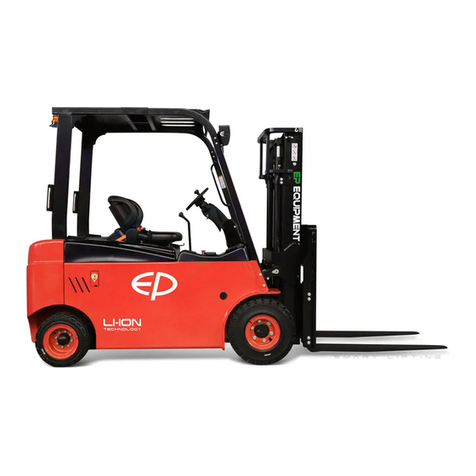
EP Equipment
EP Equipment CPD30L1-B User manual

EP Equipment
EP Equipment EPL1531 User manual
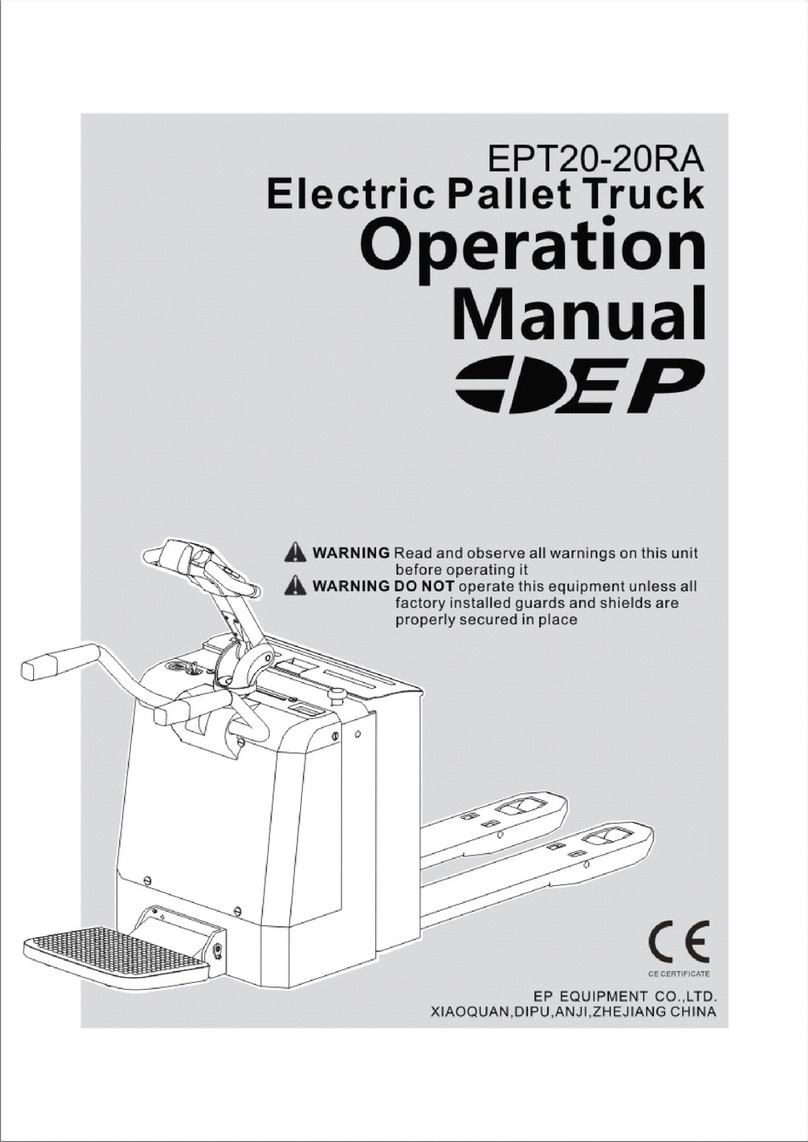
EP Equipment
EP Equipment EPT20-20RA User manual

EP Equipment
EP Equipment IMOW ICE251 User manual

EP Equipment
EP Equipment EPT20-15ET User manual
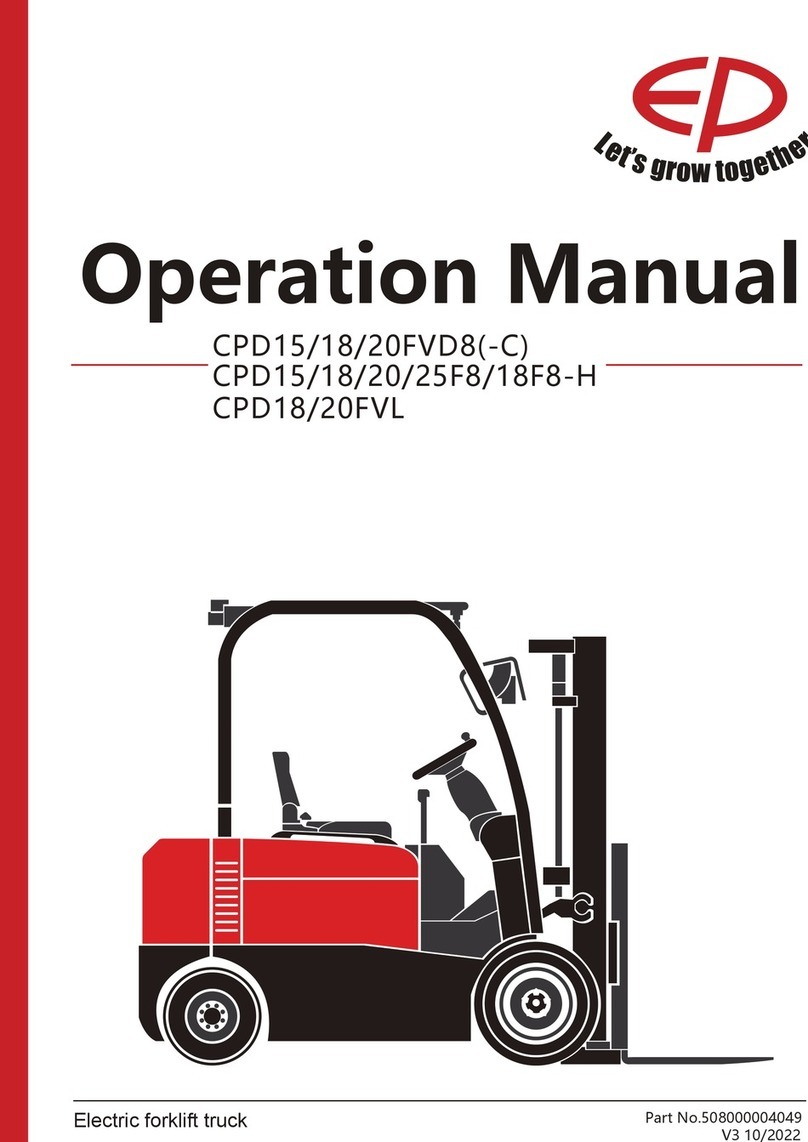
EP Equipment
EP Equipment CPD15/18/20FVD8(-C) User manual

EP Equipment
EP Equipment EPL153 User manual
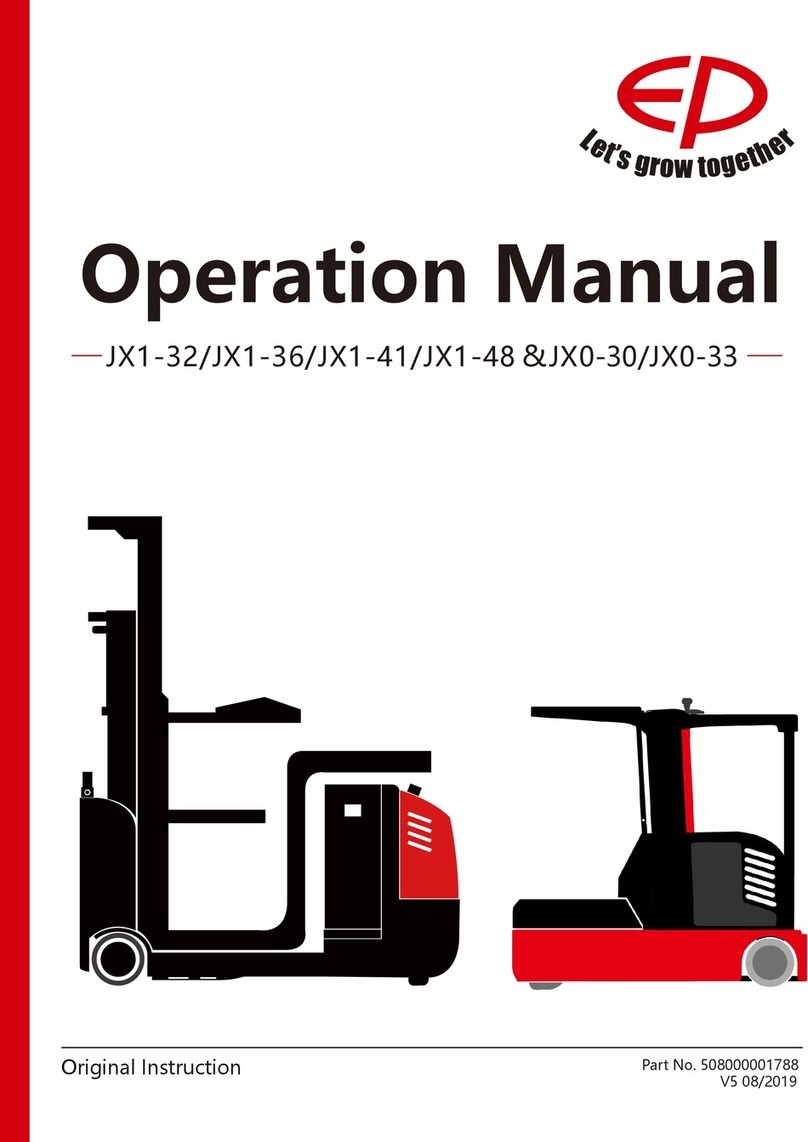
EP Equipment
EP Equipment JX1-32 User manual

EP Equipment
EP Equipment JX0-30 User manual
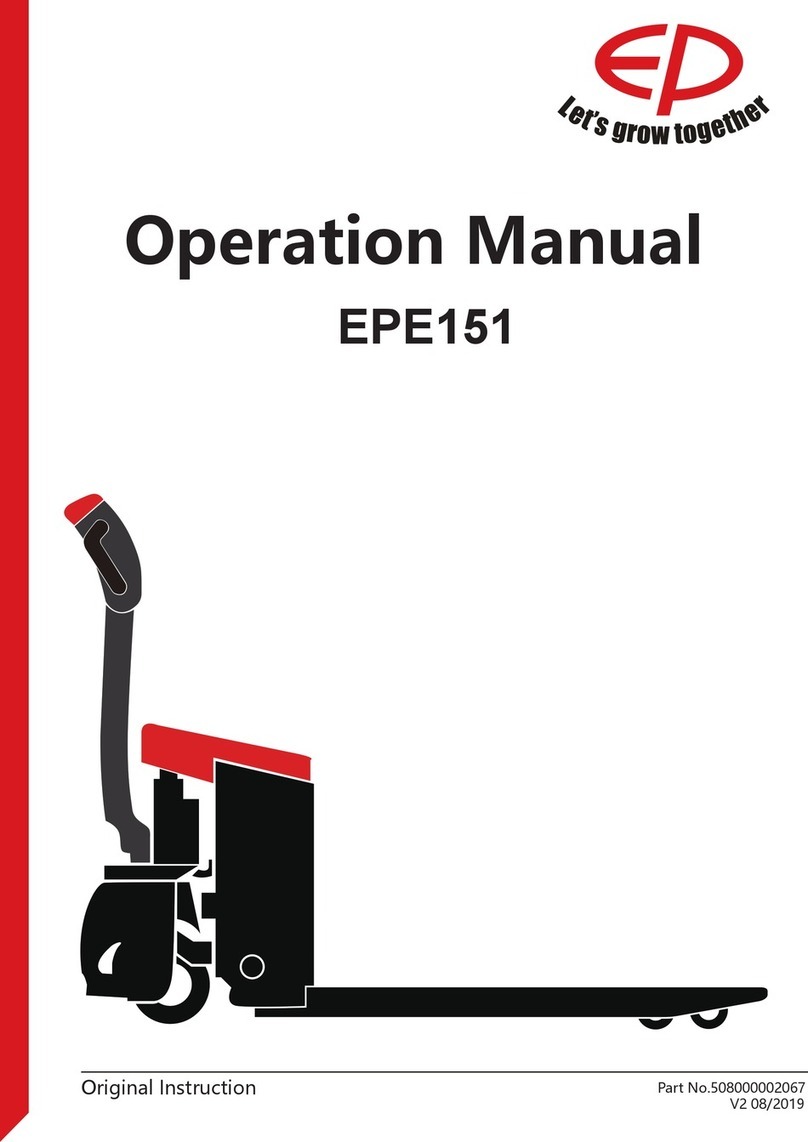
EP Equipment
EP Equipment EPE151 User manual

